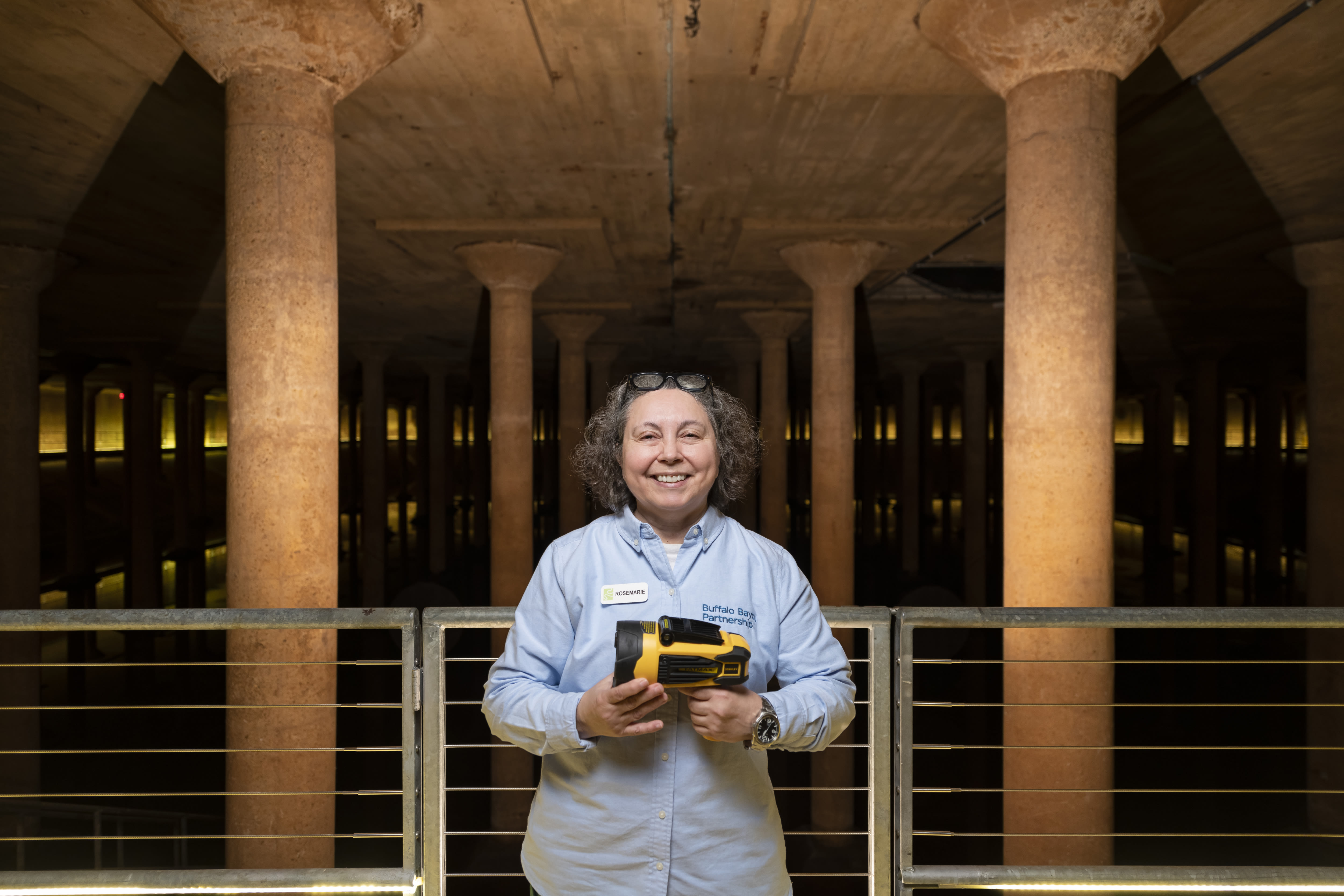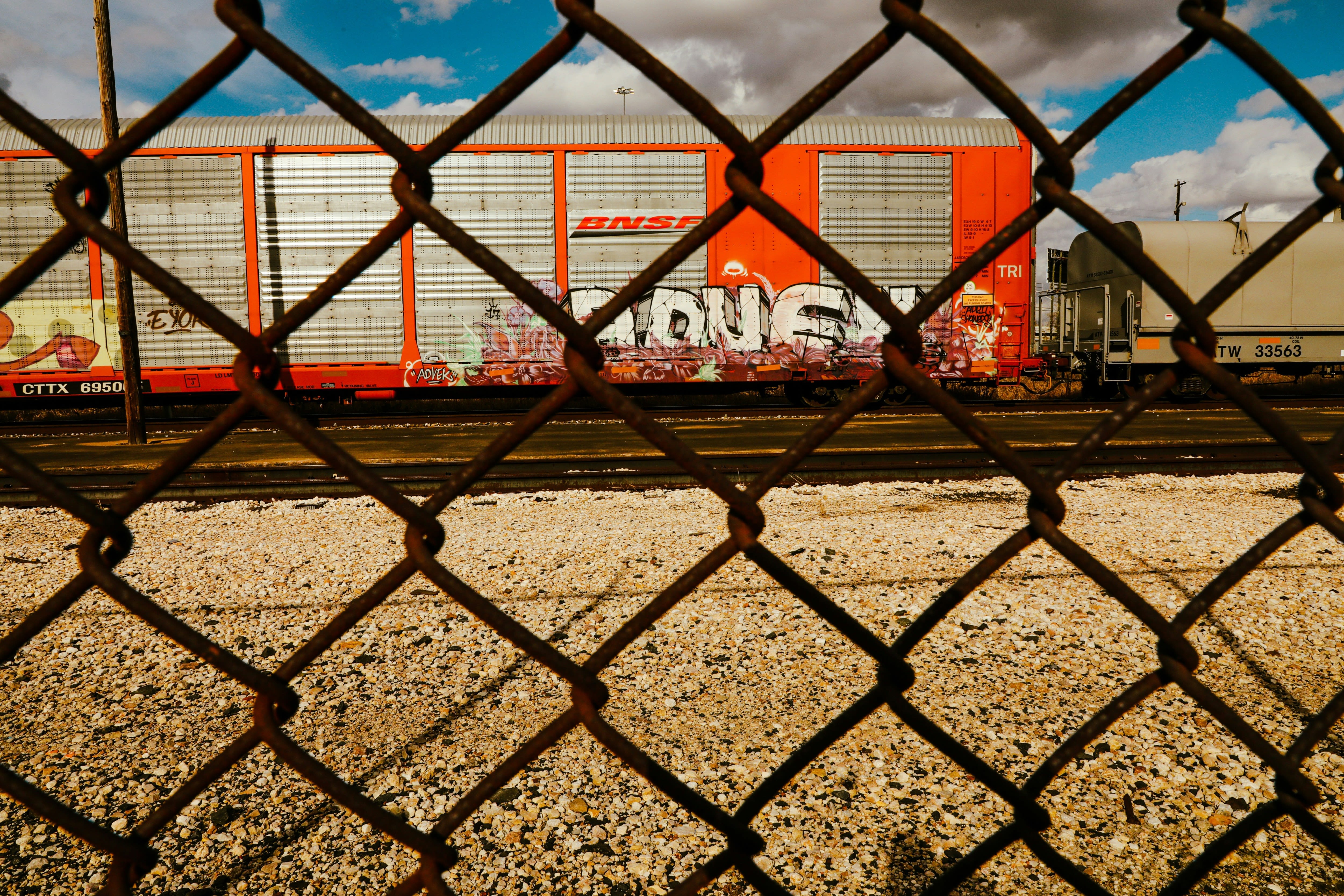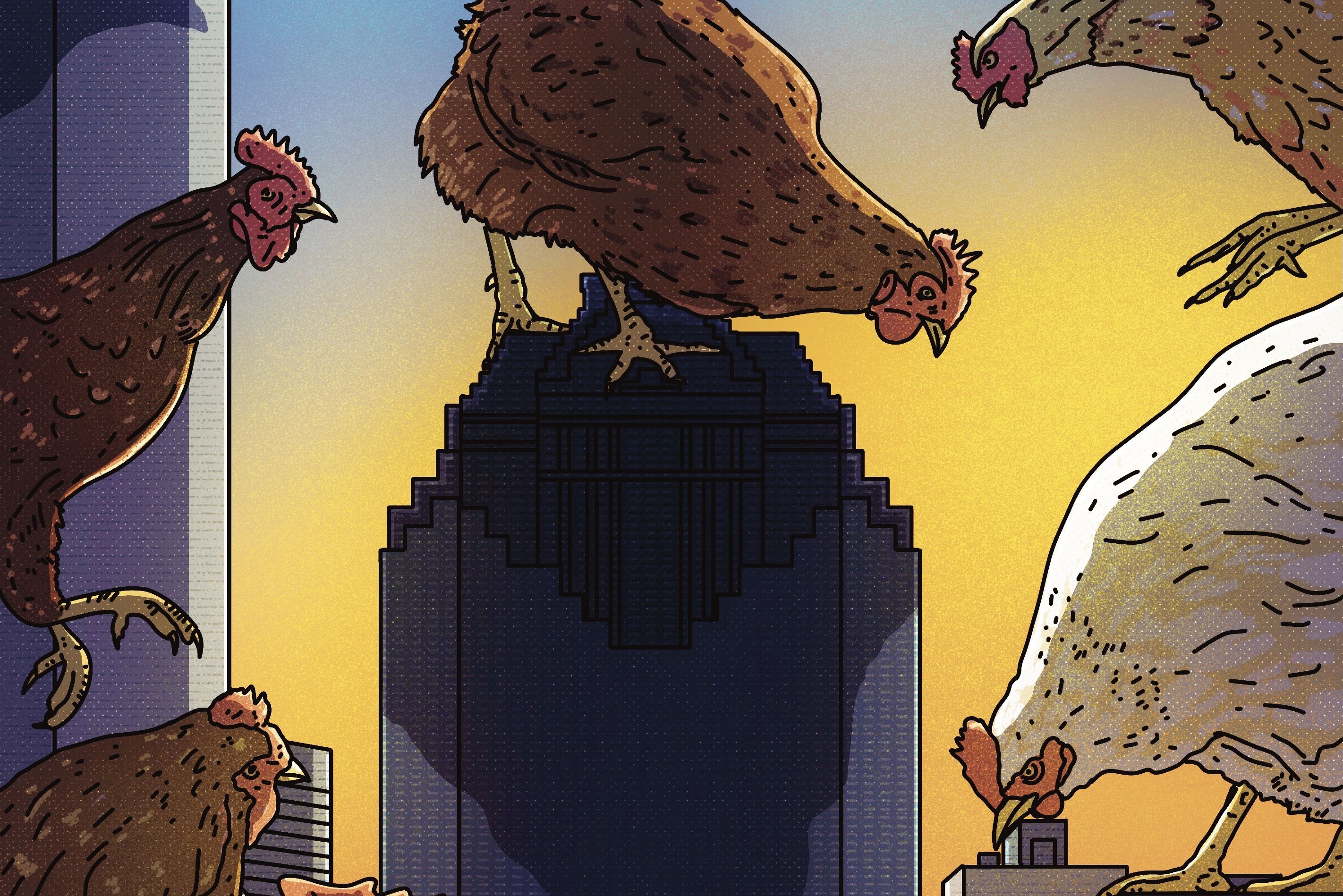
Moving up or Pushing out? How One Massive Project Could Reshape a Community
For the past few years, anyone looking east from the corner of Jensen and Clinton in the Fifth Ward has gazed at block upon block of dirt, grass and random patches of concrete stretching toward the horizon, with a cluster of trees and a few nondescript buildings in the distance. The view to the south isn’t much more impressive, just the low profile of townhomes in a young neighborhood known as EaDo across Buffalo Bayou. The bayou itself, which borders this enormous tract on the south, is nowhere in sight. Finding it requires picking a path through a line of scrubby trees and vegetation to peer down at a sluggish stream that varies in color—pea soup one day, chocolate milk the next.
Turn to the west, though, and behold the magic of this place. The downtown Houston skyline fills your vision, like a painting that covers an entire wall of your home. The peaks of its celebrated buildings—Pennzoil Place! Chase Tower!—form an irregular, oddly pleasing pattern against blue sky and white clouds. They’re so close you can count the windows in the walls facing you.
Here on this 147-acre site, where Navy ships and landing craft rumbled off assembly lines during World War II, the Houston real estate firm Midway plans to spend the next 20 years overseeing the creation of East River, a mixed-use development of homes, offices, restaurants and shops. Midway announced the project in 2016 as a joint venture with an unidentified investor-partner that bought the property for an undisclosed price four years earlier. The site became available after its longtime owner, KBR, decided in 2008 to move its operations downtown as its century-old business shifted from manufacturing to technology. The potential of a tract of land this large, this close to downtown, next to a body of water that’s emerging from years of neglect to become a prime recreational amenity, is incalculable. For developers focused on Houston’s urban core, this is the jewel in the crown.
For residents of the Fifth Ward, though, the development represents peril as well as promise.
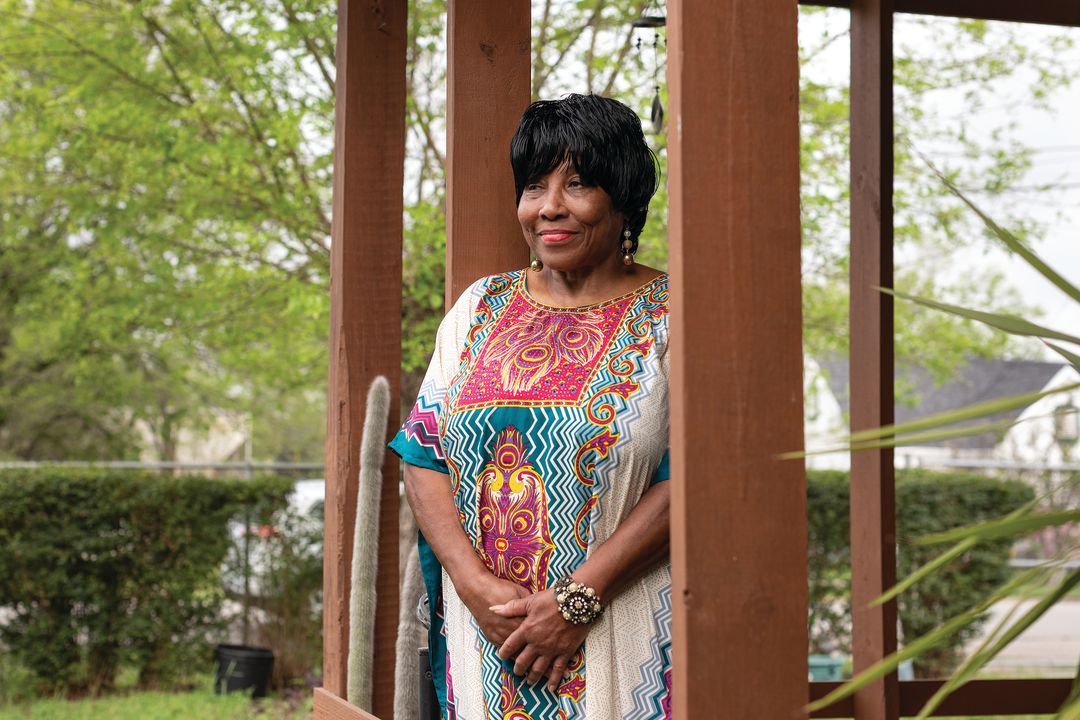
Dolores McGruder has seen her neighborhood’s Black population decline since the 1990s.
Image: Michael Starghill
Delores McGruder, 72, has lived in the Fifth Ward all her life. She’s too young to remember the neighborhood’s heyday in the 1920s and ’30s, when as many as 40 Black-owned businesses flourished on Lyons Avenue, the main commercial thoroughfare. She saw the rise of two trailblazing members of Congress who were raised in the Fifth Ward, Mickey Leland and Barbara Jordan. The neighborhood’s African American population had steadily increased since its initial settlement by freedmen after the Civil War; it acquired its name (formally, the Fifth Ward; colloquially, the Nickel) when an alderman was elected to represent it in the city government in 1866. McGruder’s connection to the Fifth Ward is elemental: “I never found another place that tugged at my heart,” she says.
McGruder rarely saw any new housing built until the 1990s, when townhomes began rising as developers sought to meet a growing demand for residences close to downtown. Since then she’s watched the community’s Black population steadily decline as new residents moved in.
“Gentrification” is urban planning shorthand for this sequence of events, playing out in many older neighborhoods around the country: a rich cultural fabric is disrupted by shifting population patterns and disinvestment; new freeways slice through, separating neighbors to ease the daily journey of suburban commuters; poverty and crime take root; resources like full-service grocery stores become scarce. Then, suddenly, everything changes. Young professionals and empty nesters flock back to the city center, triggering a surge of new development that drives up taxes and rents and pushes out longtime residents who stayed through the tough times.
This process was well under way in the Fifth Ward long before the conceptual drawings for East River were created. Across from the East River site on Clinton Drive, workers in 2020 constructed new townhomes priced at around $400,000—well above the citywide median home price of about $260,000. This development and others like it, many concentrated in the section of the Fifth Ward south of I-10, have had an effect: Home values in the Fifth Ward rose 18.6 percent from 2019 to 2020, according to the real estate firm Zillow, a trend that helps owners build wealth but also leads to higher taxes and rents. The African American share of its population shrank from 63 percent to 48 percent from 2000 to 2015.
It’s changes like these that irritate, and in many cases concern, lifelong residents like McGruder. But they’ve seen it before. Long-established neighborhood identities are fair game for marketers. Fliers for the development across from East River refer to the area as “north EaDo,” just as parts of the historic Fourth Ward were absorbed by an emerging “Midtown” decades ago. Conceptual maps of East River have labeled Buffalo Bayou as the “Buffalo River,” an aspirational bit of rebranding.
This map from the East River development is something pic.twitter.com/8ZowYHyWOY
— Jay R. Jordan (@jayrjordan) March 29, 2021
Still, new investment in a neglected neighborhood can bring many benefits—public services, parks, better streets and drainage systems, grocery stores, and other retailers. In 2016, for example, an innovative public-private partnership led to a $41 million renovation that improved the lives of tenants at Cleme Manor, a Fifth Ward affordable apartment development.
The trick is to ensure that these projects don’t serve new residents at the expense of those already dug in. This requires that the developers and local officials not only engage members of the community, but actually pay attention to what they say—something that many Fifth Ward community leaders say Midway has not done.
“We’re grassroots people,” says Joetta Stevenson, president of the Greater Fifth Ward Super Neighborhood Council #55, who was born in the Fifth Ward and lives there today. “We don’t know all the tricks of the trade.”
Though Midway says it began presenting its plans to community groups in 2018, Stevenson contends that most knew nothing about East River until 2020 and that fewer still had adequate opportunities to learn about or influence the negotiations for the project.
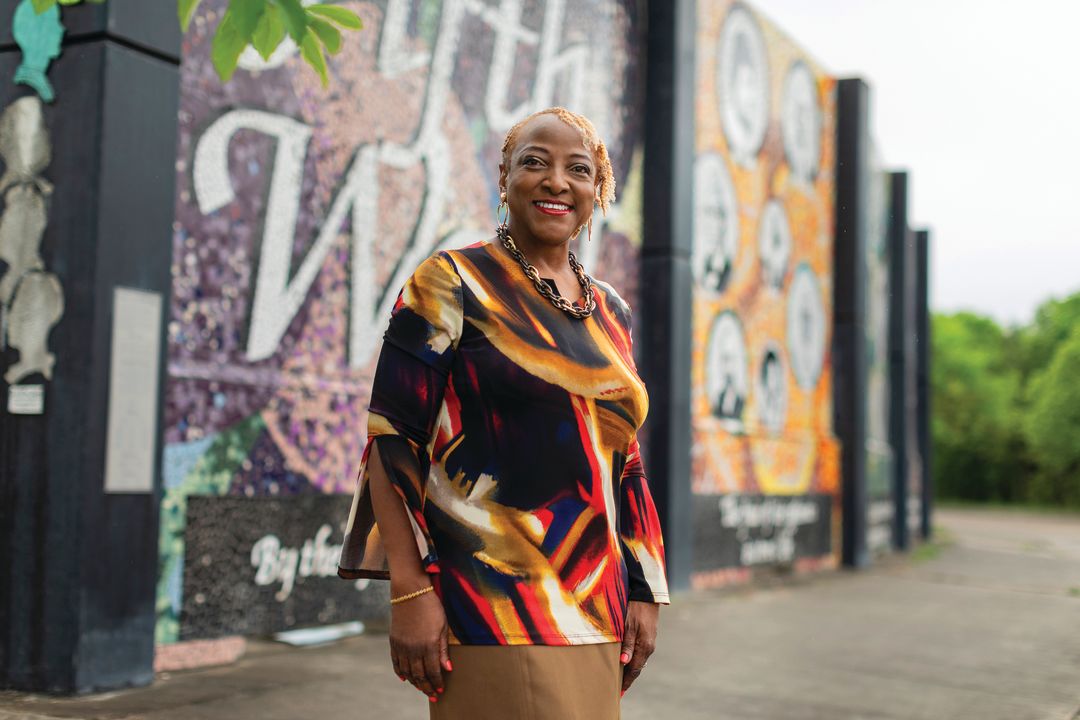
Joetta Stevenson, president of the Greater Fifth Ward Super Neighborhood Council #55, tried to educate residents about East River during the pandemic.
Image: Michael Starghill
The East River deal is particularly complex, involving an array of players alongside Midway, some with similar-sounding names: Houston’s economic development office, the Fifth Ward Redevelopment Authority, the Fifth Ward Community Redevelopment Corp., and the Tax Increment Reinvestment Zone No. 18.
“The people in this community don’t know what a TIRZ is,” Stevenson says. (Houston has two dozen such zones, within which property tax revenues above a designated level are reinvested to pay for infrastructure and capital improvements). During the pandemic, Stevenson tried to educate residents about the ongoing East River project, the roles of the various agencies involved and the importance of community involvement in the planning, while distributing baskets of food door to door to people who’d just lost their jobs and livelihoods. But it often felt like a Sisyphean task, she says, without much help from the other side, including city officials, eager to support projects that add to the tax base. “The city of Houston has basically been complicit in a lot of this development that has had a detrimental impact,” Stevenson says. “Their policies have not been our friend. They weren’t on the side of the community.”
The pandemic also made it much harder for Fifth Ward residents to participate in Midway’s primary outreach mechanism—two virtual workshops held last October. Kendra London, a neighborhood activist who leads a group called the Circle Coalition, was concerned because she knew how many residents lacked internet access or devices to participate.
“It’s challenging for many of them to get on a Zoom meeting,” she says.
At an event she organized on a Saturday morning last October, a dozen or so Fifth Ward residents plopped down with blankets and pillows to enjoy brunch on the lawn of a neighborhood restaurant, the Fifth Level. London provided them with laptops so they could participate in the community engagement meeting, to have a say in the planning of the massive new development and, in particular, its community benefits agreement.
Such agreements, first developed in Los Angeles about 20 years ago, provide a legally binding mechanism to ensure that new developments help residents of affected communities by creating jobs and providing affordable housing and neighborhood services.
In theory, these agreements could be a game changer for Houston communities. The city lacks certain tools used elsewhere to negotiate with developers when projects like East River are proposed. As the nation’s largest city without a zoning ordinance, for example, Houston can’t offer tradeoffs such as higher-density zoning in exchange for deeper and broader affordable housing set-asides. But because these agreements are new to Houston—the East River CBA is one of the city’s first—it’s not yet clear if they’ll empower vulnerable neighborhoods as experts say such accords can.
And community activists already had a cause for concern. In September, the Circle Coalition obtained emails through open records requests showing that Midway executives and leaders of the redevelopment authority, a board appointed by the mayor and city council that administers TIRZ-generated funds, discussed details of the agreement as early as October 2019 and circulated a draft as early as February 2020—eight months before asking the community for input. In addition, the redevelopment authority, which initiated the agreement on behalf of the city, declined last summer to release preliminary drafts to the public, based on a state attorney general’s ruling that these documents were part of a “deliberative process” and thus exempt from disclosure.
During the October 24 virtual meeting, activists were able to ask Midway and the redevelopment authority questions using Zoom’s chat function: “When will the developer share the details of what they asked for on our behalf?” wrote one participant, April Carpenter. Another, identified only as “Friend” asked: “When will we nail down these specifics together? Or will the TIRZ determine them unilaterally after these two community meetings have concluded?”
“As we all know,” Davis observed during the event, “the devil is in the details—issues of percentages of affordable housing, how is affordability defined, what percentage of that housing should be for neighborhood residents . . . I think we all understand that the economic forces on the community are pretty dire right now, and that this project is an opportunity to leverage a positive force in the community, or accelerate those negative trends.”
Curtis Davis, a Houston architect and urban planner who consulted on the East River project, moderated the workshop.
He provided examples of provisions that have helped communities deal with other projects: in one case, discount cards for neighborhood residents who shop in retail establishments that are part of new developments; in another, funds provided from philanthropy and other sources to help offset higher property taxes. The second example, in Atlanta, Davis said, “only came about because people were hearing each other.”
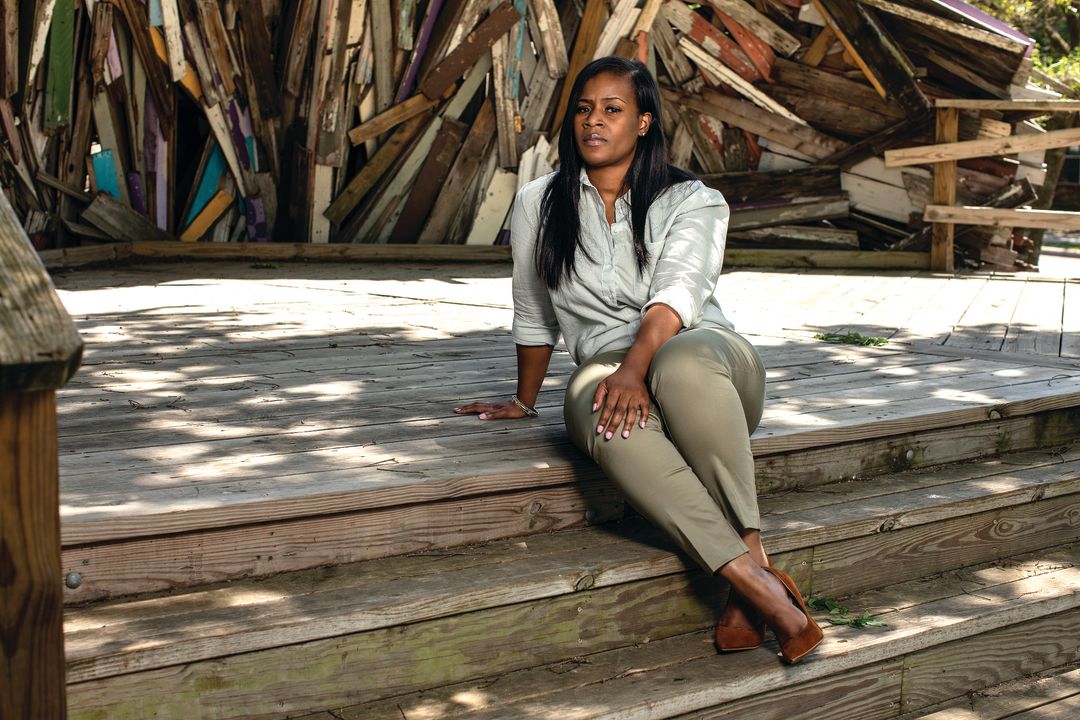
“It’s ridiculous,” community leader Kendra London says about being pushed out of her longtime home.
Image: Michael Starghill
Real estate industry leaders have long contended that the city’s limited regulation keeps housing affordable, but this argument is losing some traction as home prices and rents have continued to skyrocket over the last 20 years. “Harris County and Houston have a reputation for housing affordability,” a 2020 report by Rice University’s Kinder Institute for Urban Research stated, “but many of the findings of this report show that this affordability is disappearing.” That falls heaviest on renters.
When high-end developments put a squeeze on longtime residents of older neighborhoods through higher taxes and rent, Houstonians find few alternatives as they scout the housing market. But it doesn’t even take a big, high-profile project to push people out; a transaction as simple as the sale of an aging apartment development, which happened in the Third Ward in February, can leave families struggling to find a place to live.
“There’s nowhere left for them to be pushed to,” says Latasha McGee, a veterans’ counselor and longtime Fifth Ward resident who works with the Circle Coalition. “The people in the Third and Fourth Wards, they all came to Fifth Ward” after gentrification sent prices soaring past what they could pay in those neighborhoods. “There’s nowhere else for them to go.”
Even McGee’s own grandmother, a longtime tenant of the Kelly Village public housing development, might lose her unit because of another project looming over the Fifth Ward: the planned relocation and expansion of Interstate 45. “She’s elderly, she just recently had the coronavirus, she lives on a fixed income, and she can’t afford to live anywhere else,” McGee says.
The problems caused by high-end development in distressed neighborhoods are not unique to Houston, but certain factors create distinctive barriers to solving them. One fundamental problem is a severe, persistent shortage of housing available to poor and working-class families; another still is that gentrification simply concentrates this problem in a particular neighborhood in a given span of time.
In addition, Houston is gentrifying faster than other major Texas cities, according to a Federal Reserve Bank of Dallas analysis of American Community Survey data. From 2000 to 2015, the survey found, median income in areas less than three miles from downtown Houston went up by 67 percent, compared to 49 percent in Dallas, 39 percent in San Antonio and 65 percent in Austin. These numbers don’t mean that the residents of these neighborhoods are suddenly earning more; instead, they’re being replaced by those with more wealth. Developers are well aware of the trend.
“Housing affordability across the spectrum is becoming a problem in Houston,” says David Hightower, Midway’s executive vice president, investment and development. “Pick a spot downtown and you can shoot an arrow 360 degrees around you and in that direction, prices are going up.”
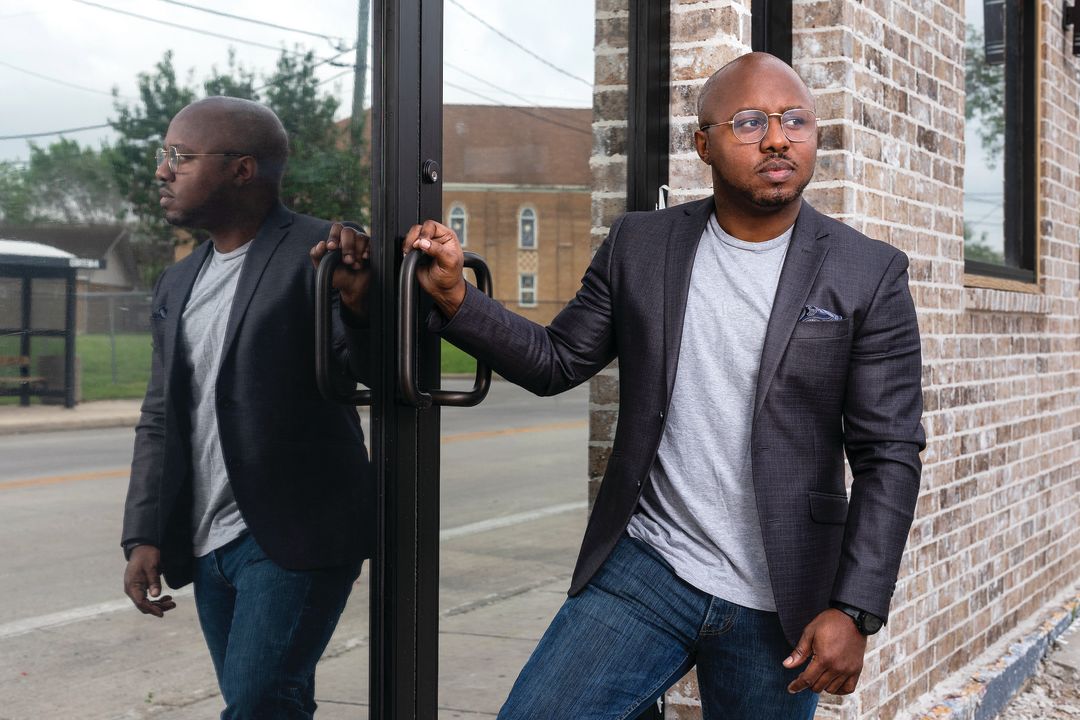
Chris Senegal’s crowdfunded project, Buy the Block, creates affordable housing for seniors and more long-term tenants.
Image: Michael Starghill
In late November, the community benefits agreement was revealed to the public. It calls for setting aside 5 percent of 360 apartments in the first phase of building for tenants earning less than 80 percent of the metropolitan area’s median income; another 10 percent would be designated for tenants earning less than 120 percent of median income. Lower income levels were considered, Hightower says, but no public financing source was identified to support them.
“It’s a first step in providing some affordable—in the generic sense—housing in our first phase of multifamily projects,” says Hightower. “These are extremely expensive to build.”
Midway, he says, intends to provide a range of housing—including “workforce housing”—among its 450 homes and 2,800 apartments projected to be built over the next two decades. “We don’t want just the guy that owns the company to be able to live in East River. We want his secretary. We want the guy in the mail room to live in East River.”
More could be built in later stages of the project “to the extent financially feasible,” as language throughout the agreement states. This qualifier is essential, says Hightower, because Midway is a private company whose outside partners will not participate “if it’s not financially feasible.” The agreement includes certain penalties for default, including blocking the redevelopment authority from issuing bonds—which would finance reimbursement to Midway for infrastructure costs—if the developer fails to live up to the terms.
When Stevenson first heard what was in the community benefits agreement she was incensed. The income targets used in the agreement to determine who will qualify for an affordable unit (5 percent set aside for a family of four earning no more than $63,050 a year, and 10 percent for a family of four earning no more than $94,550 annually) are more than twice the median household income in the Fifth Ward—about $25,500 a year in 2017, according to city of Houston data. Rents would be limited to 30 percent of a tenant’s applicable median income level. And setting aside just 5 percent of units at the 80 percent level that only some current residents might afford? “That’s nothing,” says Stevenson. “It’s insulting.”
Plus, those units are only guaranteed to stay affordable for 10 years.
“Not even a generation,” she says.
For London, whose own stake in the fight is personal, the community benefits agreement was an insult. Rising rents already forced her in 2019 to move out of the neighborhood, where her family has lived for generations. “I no longer live in my own freakin’ neighborhood,” she says. “It’s ridiculous.”
But Kathy Payton, executive director of the Fifth Ward Community Redevelopment Corporation, says the agreement, however imperfect, represents progress after years of being at the mercy of developers with deep pockets and no interest in engaging the community or meeting its needs. Her organization, which provides staff support for the redevelopment authority and offers various community services, is pursuing arrangements with Habitat for Humanity and other providers to develop more housing affordable to the Fifth Ward’s poorest residents. And she says, “There are a number of programs in place to help preserve the indigenous community.”
In recent decades, Houston’s leaders have tried various strategies to help neighborhoods respond to the forces of gentrification with limited success. Federal windfalls in the form of post-hurricane recovery funds have not lived up to their potential to add substantially to the affordable housing inventory. Neighborhood opposition and disputes over fair housing policy, among other factors, have also hindered success.
Other socially minded entrepreneurs are trying less traditional methods, like the crowdfunded project Buy the Block, which avoids raising rents by developing other streams of cash on property sites. But such an approach, founder Chris Senegal acknowledges, can reduce profits. “It requires a community-conscious person who has an intentional social investment model. You still make money, it’s still good money, you just don’t have to be an extreme capitalist trying to squeeze every penny out of your investment.”
Advocates hope more community benefits agreements gain traction in Houston, providing a way to preserve historic neighborhoods and build better relationships among communities, city officials and developers. If anything, it’s possible Houstonians will soon see community benefits agreements for those very reasons. Leaders in another historically African American neighborhood, the Third Ward, are now working to influence development associated with the Innovation District, a Rice University-designed economic development zone, and want their goals enshrined in a community benefits agreement.
“In retrospect,” says Payton, “I wish we could have had similar arrangements before the thousands of townhomes were built.”
In the long term, it’s possible that East River—set to break ground in summer 2021—will generate tax revenues that could contribute an estimated $80 million to a TIRZ-funded, city-administered affordable housing program. The money could be allocated anywhere in Houston, but Hightower says Midway has proposed that the share generated from East River be spent within the Greater Fifth Ward.
“We could easily come in here, put up a big fence, make it a gated community and do extremely well. But that’s not our vision,” says Hightower. “We are in the historic Fifth Ward. We recognize that, we’ve embraced that.”
The project design, he says, will extend the neighborhood street grid through East River to the bayou, providing convenient access to amenities including open space, bike trails, and parks. The increased access to the bayou, which has been virtually invisible to the neighborhood for years, will become more valuable as a master plan for development of the waterway’s east sector unfolds, providing connections to new parks and trails similar to the popular Buffalo Bayou Park west of downtown.
“We very much are going to be working with our community to the north on connectivity to the bayou and across the bayou,” says Hightower. “I tell all my design people, ‘I want it to be tricycle friendly.’ I can easily see kids on tricycles and moms pushing baby buggies. I’ll be really excited when that part of the project gets done.”
Still, such assurances mean little to London or Stevenson, who believe the Fifth Ward Community Redevelopment Corporation was an ineffective advocate for the neighborhood during East River’s community benefits agreement negotiations.
On December 10, about a week and a half after the agreement had been revealed, the Fifth Ward Redevelopment Authority set to vote on it during a public hearing during which numerous Fifth Ward residents called in asking for them to delay the vote and improve the agreement.
“I was driving on the freeway at the time,” Stevenson recalls, listening in as one resident after another criticized the process. “I called in on my phone so I could hear it. I pulled off the freeway into a parking lot. It was brutal. Person after person after person basically confronted the way it was done. I think there was a reckoning on that day, and anybody with even a soul would know, this wasn’t done the right way.”
Still, the board didn’t delay the process, but voted unanimously to approve the agreement, along with another—85 percent of the property taxes the authority collects from East River will be used to help reimburse Midway for building an estimated $133 million in infrastructure improvements required by the TIRZ.
But for Stevenson and like-minded residents of the Fifth Ward, the adoption of East River’s community benefits agreement doesn’t mean their struggle is over. “We have to push, but I don’t mind pushing,” she says. “I don’t care how big you are.”









